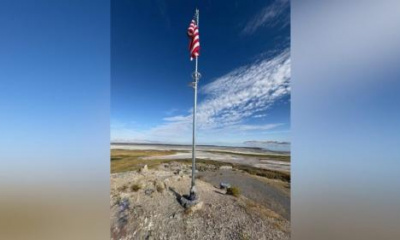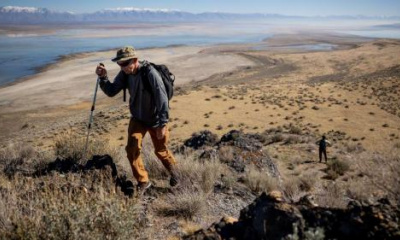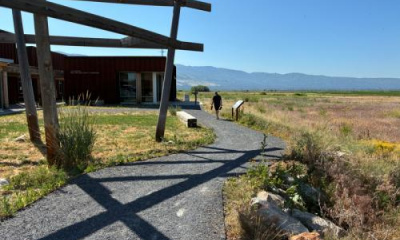ANTELOPE ISLAND, Utah — The sign at the gate is less like a greeting and more like a warning.
"The biting gnats (no-see-ums) have hatched on the island. No refunds due to insects."
No-See-Ums are out and they are out with a vengeance. Tourists visiting Antelope Island State Park were seen swatting the air with their hats.
"They’re in my ears, They’re everywhere!" exclaimed one visitor to the park who stopped to talk to FOX 13 News.
Told what they are, another visitor said: "And they’re right. I don’t see ‘em, I feel ‘em!"
No-See-Ums, or biting gnats, are a tiny — and temporary — predator on the Great Salt Lake. But when they're out, Utah State Parks rangers warn visitors to come prepared with fine mesh head nets. Bug spray won't stop a No-See-Um.
"This is the only thing that will keep you being able to spend any quality time outside during the No-See-Um season," said Wendy Wilson, the manager at Antelope Island State Park (who had to stop an interview with FOX 13 News and put on a head net when the No-See-Ums got a little too intense).
This year, scientists expect more insects at the Great Salt Lake thanks to another strong winter. It's a sign of improving conditions with more water and less salinity. The bugs are a vital food source for millions of migratory birds that visit the lake each year.
"They are really part of the ecosystem," said Dr. Bonnie Baxter, the director of the Great Salt Lake Institute at Westminster University. "They’re really really important for feeding these birds that go through."
Antelope Island State Park posts regular — and sometimes comical — "bug reports" on the insect situation. They also like to call attention to the importance that insects play in the Great Salt Lake ecosystem and host an annual "Spider Fest" to share their love of arachnids.
"They’re really crucial to the bird life here," said Dr. David Herbst with the University of California Santa Cruz's Sierra Nevada Aquatic Research Laboratory.
Dr. Herbst and Dr. Baxter were presenting at Friends of Great Salt Lake's Issues Forum on Thursday about the importance of bugs. Even more critical for the health of Great Salt Lake? Brine flies, which will emerge soon. They don't bite (but they can land on you and tickle).
"The biting gnats? They go away once it gets hot, if you get a week of hot weather," said Dr. Baxter. "Avoid the biting gnats or wear a bug net or go look at the baby bison from your car right now. Once the weather gets hot? The brine flies are just cool to look at and cool to walk through. I say enjoy the bugs and give them gratitude for the birds that they feed."
There's also mosquitos and midge flies out at the lake, which are a food source for birds. Insects can act as a sort of "canary in the coal mine" about the Great Salt Lake's health, said Dr. Herbst.
"If you think of the lake in terms of how we adapt different kinds of management policies for getting water into the lake, we really want to know how successful is that? How are we doing?" he said. "So as a measure of the health of the lake itself, you want a performance measure that responds to the health of those conditions. So the flies really do."
So if you're planning to visit the Great Salt Lake? Pack a head net and a little bug spray.
"We let people know the biting gnats have hatched, what to do to prepare for it. Once you’re in this?" Wilson said, pointing to the mesh head net. "You’re good to go! There’s even some that you can have full sleeves, but you can go on hikes."








